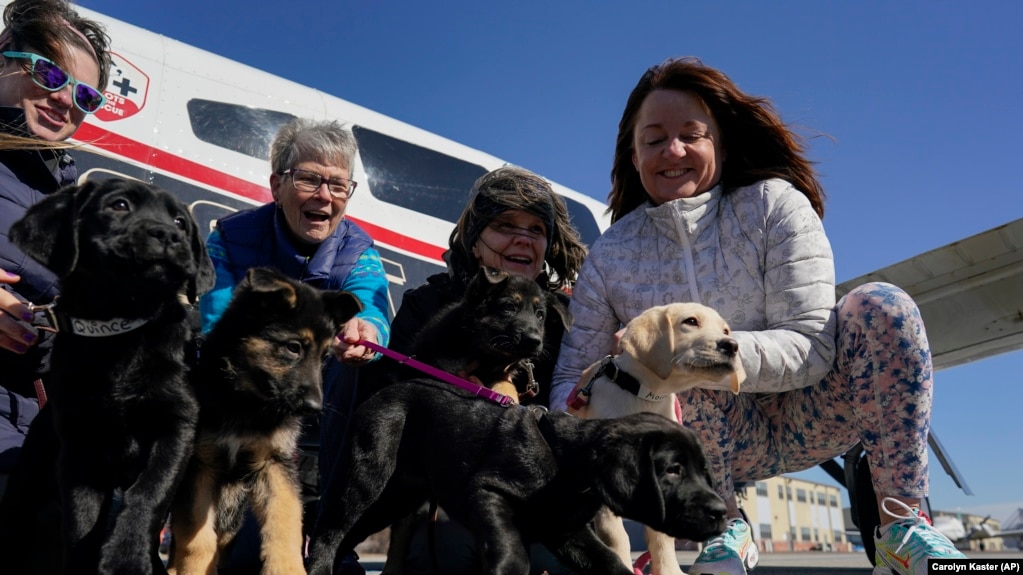Puppies Trained to Guide the Blind

For many blind people and those with vision difficulties, life can be made easier with a guide dog. But making a good guide dog takes much work. And for many, the long road begins when the dog is a puppy.
Take for example, the five 8-week old puppies that arrived at the Tipton Airport in Fort Meade, Maryland early in February. At that time, they were loving, playful animals – like all puppies. Now, however, the Labrador retriever and German shepherd puppies are on the road to becoming useful members of society.
If they prove themselves able, they could become guide dogs. They will help to improve the lives of people with vision loss and vision impairment.
The faithful-friends-to-be are part of a training program of an organization called Guiding Eyes for the Blind. The puppies flew from the organization’s head office in Yorktown Heights, New York, to Maryland onboard a “Pilots To The Rescue” flight.
Pilots to the Rescue is a not-for-profit organization that transports “…animals as well as people at risk,” it states on its website.
The puppies were born in Yorktown Heights. And they spent the first two months of their lives with their moms and siblings. The young dogs were bred for health and temperament. (Here, “temperament” means how they respond to their environment.)
However, breeding alone will not be enough to turn these puppies into guide dogs. They will need training from dog training experts.
They also will need to be nurtured by volunteers called Puppy Raisers. The goal of this nurturing by Puppy Raisers and their families is to turn the energetic, playful puppies into well-behaved and well-socialized dogs.
These are the qualities needed for a successful guide dog: well-bred, well-trained, well-behaved, and well-socialized.
The process will take about 14 to 16 months of weekly classes and testing. Training starts with the basics: name recognition, behavior, and commands such as “sit” and “down.” The trainers then move on to more complex commands. After that, the puppies are given to the Puppy Raisers. The raisers and their families will show the puppies the world and how to act in it.
A manager for Guiding Eyes for the Blind’s Puppy Program is Cindy Tait. She told the Associated Press that other experts will keep a watchful eye on the training and help with any problems the raisers may have along the way.
Once a solid, loving foundation is in place, puppies must leave their raisers and return to the Guiding Eyes training center for official guide dog training. Formal training is where the dogs demonstrate whether they will become a guide dog for the blind, a different kind of service dog, or someone’s pet.
This means there is almost always a tearful goodbye.
Words in This Story
vision – n. the act or power of seeing
impairment – n. diminishment or loss of function or ability
sibling – n. one of two or more individuals having one common parent
breed – v. to produce or increase (animals or plants) by sexual reproduction
temperament – n. a person's attitude as it affects what he or she says or does
nurture – v. to further the development of
basic – adj. of, relating to, or forming the base or essence
foundation – n. the act of beginning or creating
demonstrate – v. to prove or make clear by reasoning or evidence
https://learningenglish.voanews.com/a/puppies-trained-to-guide-the-blind/6476403.html